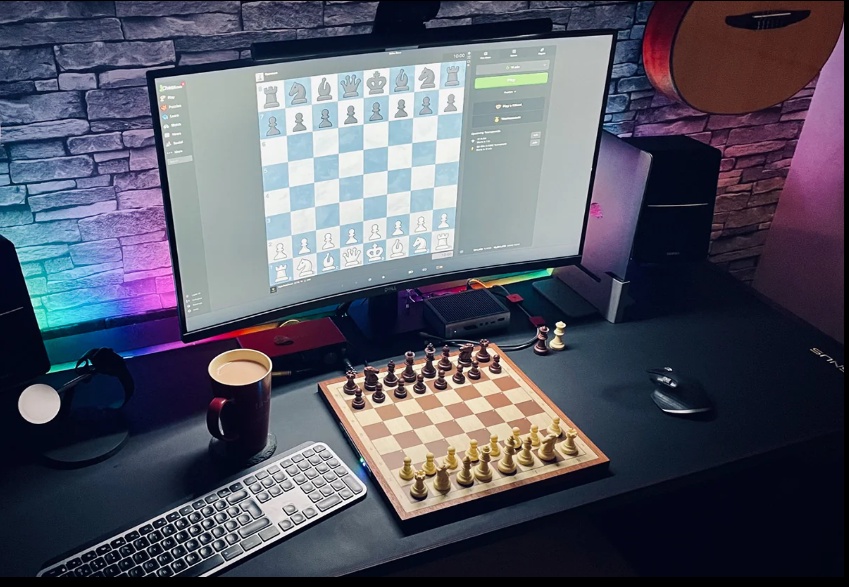In the realm of strategic games, few have captured the imagination and challenged the intellect quite like chess. For centuries, it has been a battleground where minds clash in a test of foresight, calculation, and cunning. However, with the advent of technology, the game has undergone a transformation, shifting from traditional wooden boards to the sleek digital interfaces we see today. In this blog, we delve into the evolution of computer chess boards, tracing their journey from humble beginnings to the pinnacle of artificial intelligence.
The Rise of Analog Chess Computers
The journey of computerized chess begins in the mid-20th century, a time when computing power was in its infancy. Early pioneers envisioned the potential of machines to challenge human players in this cerebral contest. The first generation of chess computers emerged, characterized by their analog nature and rudimentary algorithms.
In 1950, Claude Shannon, the father of modern information theory, designed the first chess-playing program. His creation, though simple by today's standards, laid the groundwork for future developments. The following decades saw the birth of dedicated chess computers, such as the famous "Turbo King" and "Sargon," which pitted players against a pre-programmed set of moves.
Digital Dawn: From Mainframes to Personal Computers
The advent of digital computing heralded a new era for computer chess. Mainframes and minicomputers enabled researchers to explore more sophisticated algorithms and strategies. In 1977, the chess-playing program "Belle" made history by becoming the first to achieve a master rating.
As computing power continued to advance, the landscape shifted towards personal computers. The 1990s witnessed a proliferation of chess software, with titles like "Fritz" and "Chessmaster" captivating players with their blend of tutorials, analysis, and challenging opponents. These programs marked a significant leap forward, employing increasingly complex algorithms and databases to simulate human-like gameplay.
The Reign of Deep Blue and Modern AI
The pinnacle of computer chess arrived in 1997 when IBM's Deep Blue made headlines by defeating reigning world champion Garry Kasparov in a historic match. This watershed moment showcased the potential of artificial intelligence to rival and surpass human mastery in strategic endeavors.
Since then, computer chess has continued to evolve, fueled by advancements in machine learning, neural networks, and parallel processing. Today, programs like Stockfish and AlphaZero represent the cutting edge of AI-powered chess engines, capable of outmaneuvering even the most seasoned players.
The Era of Digital Chess Boards
While software-based chess engines have dominated the scene, the emergence of digital chess boards has added a new dimension to the game. These innovative devices combine the tactile experience of traditional boards with the computational power of modern technology.
Digital chess boards feature electronic sensors embedded beneath the squares, allowing them to detect and record moves in real-time. Coupled with integrated displays and connectivity options, they offer a seamless blend of physical and digital interaction. Players can challenge opponents from around the world, analyze games with AI assistance, and even stream live matches—all from the convenience of a single device.
Conclusion: Bridging Tradition and Innovation
The evolution of computer chess boards is a testament to the enduring allure of the game and the relentless march of technological progress. From humble beginnings as analog curiosities to the pinnacle of artificial intelligence, they have transformed the way we play, learn, and appreciate chess.
As we look to the future, the fusion of traditional craftsmanship with cutting-edge technology promises to elevate the chess experience to new heights. Whether you're a seasoned grandmaster or a casual enthusiast, the journey of computer chess boards invites us to explore the boundless possibilities of human ingenuity and creativity.


No comments yet